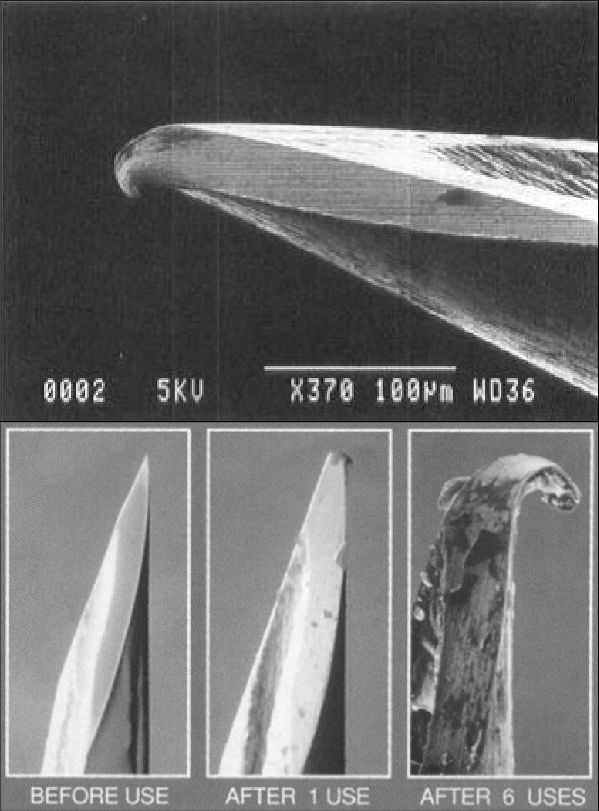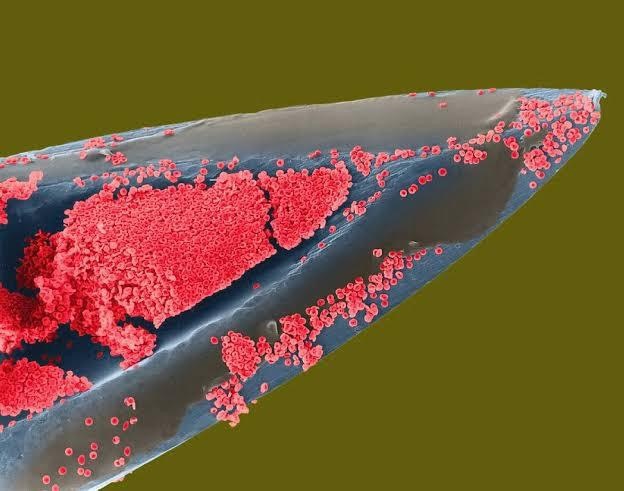Its crazy how crude all of our tools look at this magnification.
pics
Rules:
1.. Please mark original photos with [OC] in the title if you're the photographer
2..Pictures containing a politician from any country or planet are prohibited, this is a community voted on rule.
3.. Image must be a photograph, no AI or digital art.
4.. No NSFW/Cosplay/Spam/Trolling images.
5.. Be civil. No racism or bigotry.
Photo of the Week Rule(s):
1.. On Fridays, the most upvoted original, marked [OC], photo posted between Friday and Thursday will be the next week's banner and featured photo.
2.. The weekly photos will be saved for an end of the year run off.
Instance-wide rules always apply. https://mastodon.world/about
Some medical tools look crude even at regular size… they don’t call orthopedics bone carpenters for nothing!
People would never set foot in a hospital again if they found out how many orthopedic surgeries involve a dewalt drill at some point.
My knee replacement was carried out with an epidural pain block, plus sedation. I came down from cloud nine briefly to wonder why someone was doing renovations while surgery was in progress - then realised all the drilling and hammering was my new joint going in. Phew! Back to lala land...
Lmao "oh shit I'm a house"
I'm just going to leave this discovery here.
That's great. I rotated through an ortho lab in the 1990s, and the joint replacement kits back then included a sterile, disposable drill that you were just supposed to throw out after the procedure.
I recently saw a knee replacement that used one of those ryobi oscillating cutters (the ones that were super trendy a few years back). Total garbage for home use, but man with a 3D printed cutting guide shaped to fit over the bone, they finished the osteo and arthroplasty portions in ten minutes flat. Just insane what we can accomplish when we combine modern volumetric imaging techniques with coupons for home depot.
I've seen enough joint replacement videos, especially knees, to think carpentry skills are a job requirement.
Well at least they're not using a store brand.
My hospital buys from Harbor Freight!
I've started calling folks taking X-rays the bone paparazzi.
I guess that's better than calling neurosurgeons spaghetti artists
I gained an appreciation for how precise/sharp our tools are when I learned microtomy. If you so much as touch the cutting edge with anything outside of its intended use it messes up that area of the blade instantly. Same goes for a nice pair of chef's knives.
It actually looks a LOT smoother and sharper than I expected. Look at microscope photos of razors and knives and they look like chewed up chisels.
I believe it’s damaged by piercing the skin, it’s pristine before.
Crude aspects of fleshy meatbags.
From the moment I understood the weakness of my flesh, it disgusted me. I crave the certainty of steel.
certainty of steel.
Yeah.. take a few material courses in engineering...
It's not so certain a lot of the time...
I crave the certainty of neutronium
The quality of steel has generally gone down in the last hundred years. I'm not trying to dunk on China specifically because cheap steel is manufactured in more places than just there - but I recently saw a stress test of a cheap modern maul made from Chinese steel vs a 100 year old American maul and it's like they aren't even in the same category. The old ones were indestructible.
The purity of the blessed machine
Glory to the Omnissiah
The flesh is weak, but deeds endure

See that little hook at the point? This is from penetrating skin ONCE.
This is why you don't re-use needles folks!

There are other reasons.
Holy shit. I noticed that too and thought that must be one of the ones that hurts going in, figured it was from when they draw the medicine into the syringe, or maybe even from taking the cap off.
This is fascinating. I mean we all know the theory, but to actually see the cells under magnification puts you in range, and makes you wonder what else there is to know. And the answer is always MORE.
Education should work more practical application in with the theory. I'm looking at you, calculus!
Seriously. I'm in my 40s and this is the first time I've ever had any sense of scale for red blood cells. Very cool!
Mmmmm red caviar ... 😋
Thank you for the caption. My fist thought was “how did they take this photo in color?!?”
Looks like Nerds. Nerds running the whole operation.
Nerds always run the whole operation 🤓
I want to eat a red blood cell. Like one the size of my hand that tastes like a gummy bear
Can't you just eat some real gummy bears? I think they even make big ones.
Frighteningly big.

Please do not buy your child a gummy bear bigger than their head. We have enough problems with diabetes as it is.
Would probably taste like a rusty nail, but gummy.
I wonder what gauge needle that is?
At very rough estimate, I would guess a 30 gauge needle. They have an outer diameter of .31 mm. A blood cell is about 7 micrometer across. It looks like you can fit more a smidge fewer than 50 cells across the thickest part of this needle. Cheers!
Where is the plasma?
I'm assuming if the syringe was wet before being placed in the microscope, the vacuum of the chamber would cause most of the water in the plasma to vaporize. The remaining salts and compounds would be much smaller than the red blood cells. The density of the red blood cells would be much larger than any remaining plasma, so the bulk of your backscattered electrons will be coming from the cells and needle, making the plasma essentially transparent. This is a fairly low magnification image for SEM, but that's how you get such fantastic depth of field.
I didn't know electron microscopes use a vacuum chamber.
The previously donated it.



